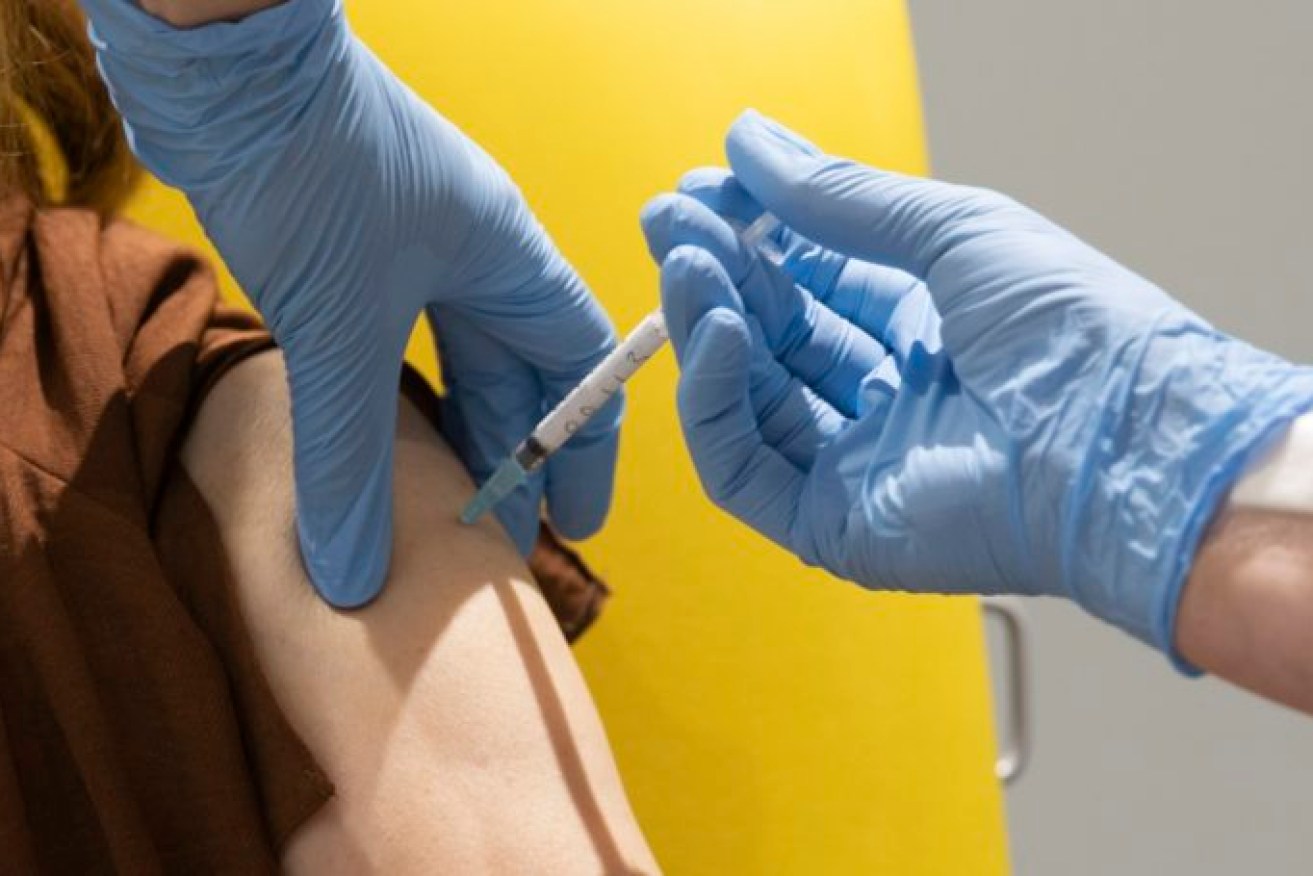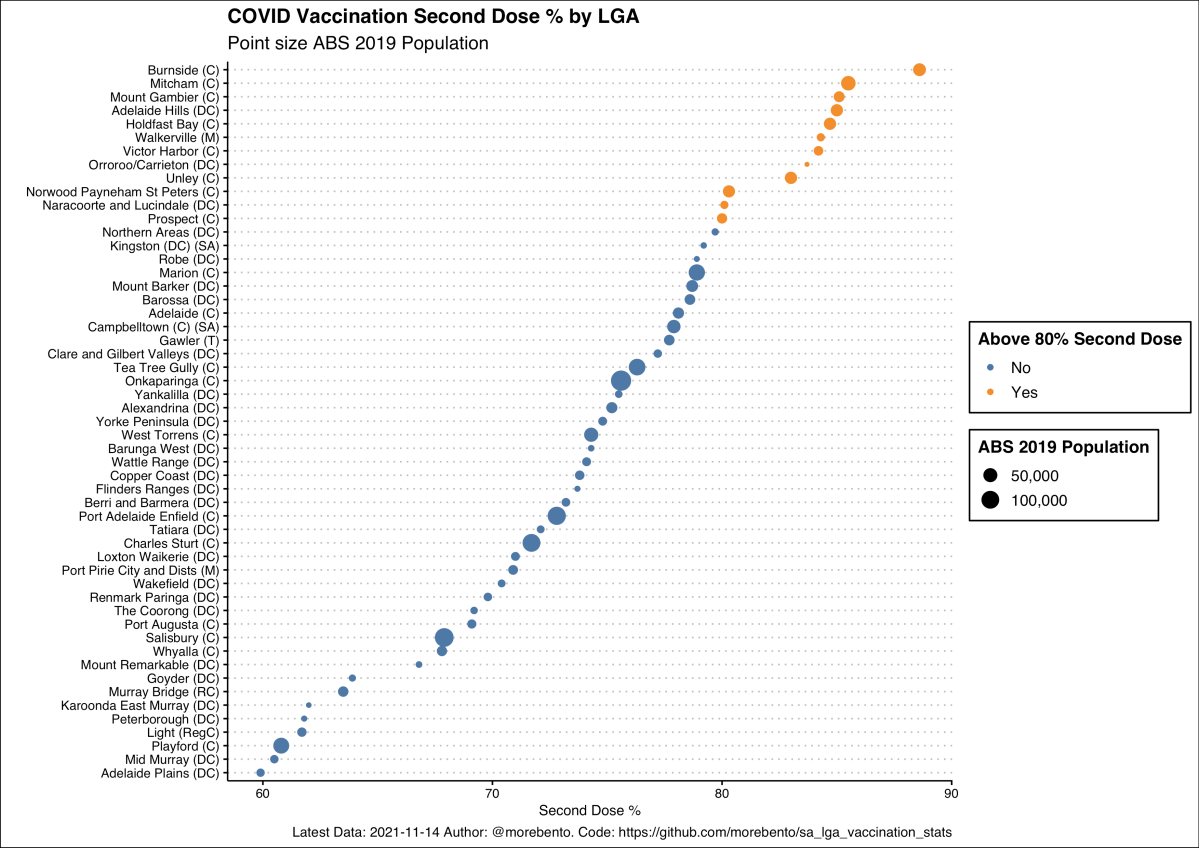Lagging regions race to reach November 23 vax target
At least 14 local government areas in South Australia are yet to reach 70 per cent double-dose vaccination one week before the state reopens its borders, with Playford just hitting 60 per cent.


The latest federal government LGA vaccination data, correct as of Sunday, shows the Adelaide Plains currently has the state’s lowest recorded vaccination rate with just 59.9 per cent of over-16s in the area double-dosed.
Meanwhile, the northern suburbs of Playford and Salisbury are at 60.8 per cent and 67.9 per cent fully vaccinated respectively.
Statewide, 74.1 per cent of the over-16s population is fully vaccinated while 85.4 per cent have had at least one jab.
Currently, 41 South Australian LGAs with vaccination data are yet to pass the 80 per cent double-dose mark, of which 14 are only between 59 and 70 per cent fully vaccinated.
The projections are based on federal health department LGA statistics, which do not include Kangaroo Island or many Eyre Peninsula communities.

Scatter plot showing the current spread of South Australian LGAs according to their vaccination rates (Graph: Ben Moretti)
Playford and Salisbury – which have a combined over-15s population of nearly 190,000 people – both recorded their lowest percentage point increase in first dose vaccination since LGA-specific data was first published on August 27.
The percentage of people in Playford to come forward for their first dose last week only grew three percentage points to 77.3 per cent.
Salisbury recorded an even lower growth in first dose percentage, increasing 2.3 points to reach 81.8 per cent.
Chief public health officer Nicola Spurrier yesterday said she “really am very concerned for those particular suburbs”.
SA Health CEO Dr Chris McGowan told parliament’s budget and finance committee on Monday that rates in the northern suburbs were “slowly coming up”.
“That is the area that we’re worried about,” McGowan said.
“Their lives are pretty challenging lives they’ve got going on up there.
“So we’re just trying to make it as easy as possible, when they’re ready to get the jab we’ll have a nurse and a syringe ready for them.”
Playford Mayor Glenn Docherty last week urgently called on SA Health to permanently extend opening hours at the Elizabeth mass vaccination hub in a bid to boost lagging jab rates.
Authorities are currently trialling extended opening hours at the centre on Thursdays, while a new seven-day walk-in vaccination clinic at Munno Para Shopping Centre also opened earlier this month.
At the other end of the spectrum, 12 LGAs have now passed 80 per cent double-dose vaccination, and 15 have passed 90 per cent first dose.
Burnside is leading the way at >95 per cent first dose vaccination and 88.7 per cent fully vaccinated.
Mitcham (85.5 per cent double-dose), Mount Gambier (85.1 per cent), the Adelaide Hills (85 per cent), Holdfast Bay (84.7) and Walkerville (84.3) are the next leading LGAs.
McGowan also told the committee yesterday that vaccination of Indigenous communities was SA Health’s “biggest issue” at the moment and it required health authorities to “radically” change the way the vaccine program is deployed.
As of Sunday, 57.5 per cent of Aboriginal people in South Australia have received one dose of vaccine, while only 43.6 per cent are fully vaccinated.
“The unvaccinated are … tending to be people for whom the general communications – be they through the electronic press or the press of any sort really – they’re not as connected into it as some of the rest of us are,” McGowan said.
“Also in some communities, their lives are different than my experiences where we’ve got a lot of privilege to be in control of lots of variables in our life – we’re not struggling to get our income, we can get away from work if we need to do something.
“For many of our communities, their lives are a lot much more chaotic, their lives are much more demanding and less structured, and so their ability to access and make time to book for a vaccine is different.”
Spurrier said while there has been “fabulous work done by our Aboriginal leaders”, she was still concerned about the overall vaccination level in Aboriginal communities.
“The rates for older Aboriginal people are pretty good but there are many younger Aboriginal people that are not vaccinated yet,” she said.




